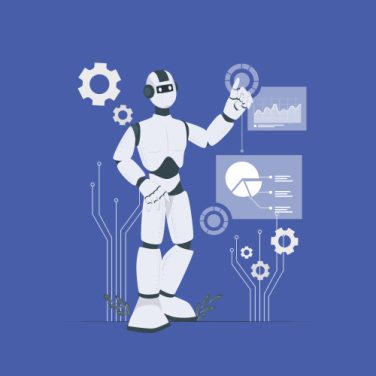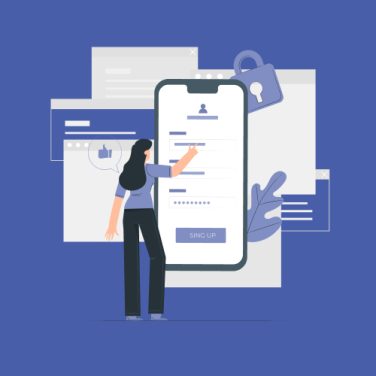Artificial Intelligence (AI) in recruitment applies machine learning, natural language processing, and automation across sourcing, screening, matching, and onboarding workflows.
It transforms traditional hiring by parsing thousands of resumes with NLP pipelines, deploying chatbots for initial engagement, and leveraging predictive analytics to forecast candidate success.
The scope of AI and recruitment now spans resume parsing and chatbots to advanced predictive talent forecasting and AI-driven video interviewing platforms.
Narrow AI solutions excel at task-specific functions such as automated candidate screening and scheduling, while generative AI models enable content creation, proactive outreach, and dynamic job description optimisation.
Adoption rates for AI in talent acquisition have surged in recent years, driven by efficiency gains, improved candidate experience, and a commitment to diversity.
According to industry findings, over 70% of large enterprises now use ai for recruitment to expedite hiring cycles and enhance diversity metrics. Smaller firms are also exploring AI-driven chatbots and automated shortlisting tools to reduce cost-per-hire.
Key drivers include accelerating time-to-hire, eliminating unconscious bias, and scaling operations without proportional headcount increases. As AI and recruiting mature, organisations must differentiate between narrow and generative AI to tailor solutions to their unique talent acquisition challenges.
What constitutes AI in hiring today?
- Machine learning for resume parsing and skills extraction
- Natural language processing in chatbots and job description generation
- Robotic process automation for interview scheduling and background checks
- Video interviews powered by computer vision and speech analytics
- Generative AI for proactive candidate outreach and content creation
TL;DR: Key takeaways
- AI accelerates hiring cycles by automating repetitive tasks and offering real-time insights into candidate pipelines.
- Objective evaluations reduce bias and improve diversity metrics through anonymised scoring frameworks.
- Chatbots and generative AI boost candidate engagement, brand perception, and application completion rates.
- Successful implementation demands a clear roadmap: data readiness, ethical guardrails, and change management across HR functions.
- Measure ROI via time-to-hire, cost-per-hire, candidate satisfaction scores, and diversity KPIs to optimise continuous improvement.
How AI is redefining the hiring process
AI is redefining the hiring process by automating manual screening and transforming recruiter focus from administrative tasks to strategic decision-making.
Instead of reviewing spreadsheets, talent acquisition teams monitor algorithmic shortlists and real-time pipeline dashboards that surface high-potential candidates.
Dynamic job posting optimisation uses AI to tune ad copy and placement, ensuring roles reach the most relevant talent pools.
Real-time pipeline monitoring replaces static spreadsheets, enabling agile adjustments to sourcing strategies based on live candidate engagement metrics. Recruiters can instantly see which channels yield top-fit profiles, reallocating resources to maximise ROI and accelerate hiring velocity.
Leading adopters demonstrate tangible results. Unilever’s AI screening programme reduced time-to-hire by 75%, while L’Oréal’s chatbot integration handled over 300,000 candidate queries annually, boosting application completion rates by 40%.
These examples highlight how AI and recruitment workflows shift from reactive to proactive, empowering teams to allocate human expertise to high-impact interactions rather than repetitive tasks.
Key benefits of AI in recruitment: Speed, bias reduction, and cost savings
Adopting AI and recruitment technologies delivers multiple strategic advantages:
- Time savings: Automated resume parsing processes thousands of applications in seconds, cutting initial screening from days to minutes.
- Bias mitigation: Objective scoring frameworks remove demographic markers in early evaluations, reducing unconscious bias and improving diversity outcomes.
- Cost efficiencies: Lower cost-per-hire by minimising agency fees and reallocating recruiter hours to value-added activities.
- Scalability: AI-driven pipelines handle surges in volume—such as campus drives or seasonal hiring—without proportional increases in headcount.
- Improved quality of hire: Data-driven matching engines surface candidates with proven competencies, boosting first-year retention and performance metrics.
Anatomy of an AI-enabled recruitment process
| Giai đoạn | Description |
|---|---|
| Sourcing | Automated talent pool expansion via AI-driven search across job boards and social media. |
| Screening | ML models score resumes against job-specific competencies, ranking candidates by fit. |
| Engagement | Chatbots schedule interviews, answer FAQs, and send application reminders. |
| Assessment | AI-driven video interviews analyse speech patterns, facial cues, and soft skills. |
| Selection & Offer | AI predicts offer acceptance likelihood and optimises compensation and benefit terms. |
| Hội nhập | Personalised onboarding schedules, VR orientation, and automated paperwork completion. |
Automating candidate screening with machine learning
Machine learning powers the heart of automated screening in AI and recruitment. Key components include:
- Resume parsing: NLP pipelines extract skills, experience, and education fields with high accuracy.
- Ranking algorithms: Candidates receive fit scores based on weighted parameters defined per role.
- Continuous model training: Recruiter feedback loops refine model performance, improving prediction accuracy over time.
- Integration: Seamless handoff to Applicant Tracking Systems.
- Use case: Organisations report up to 80% reduction in screening time, freeing recruiters to conduct structured interviews.
Chatbots and initial candidate engagement
AI-driven chatbots transform candidate engagement by offering:
- 24/7 availability: Instant answers to FAQs and automated interview scheduling outside business hours.
- Personalisation: Tailored responses leveraging candidate profile data and job requirements.
- Drop-off prevention: Proactive nudges via email or SMS to complete applications and assessments.
- Analytics: Engagement metrics provide insight into conversation flows and candidate sentiment.
- Product tie-in: Chatbot integration reduces inbound email volume and elevates candidate experience.
AI-powered candidate matching and shortlisting
Advanced matching engines use AI and recruiting innovations to improve shortlist accuracy and fairness:
- Semantic matching: NLP models map candidate skills and experience to role requirements beyond exact keywords.
- Predictive fit scoring: SmartAssist leverages historical performance data to forecast candidate success probabilities.
- Internal mobility: AI-driven recommendations identify existing employees who align with open roles, boosting retention and reducing time-to-fill.
- Fairness filters: Anonymisation of demographic attributes ensures shortlists generated free from conscious or unconscious bias.
Objective AI-driven interviews and assessments
Integrating AI into interviews and assessments delivers consistent, objective evaluation at scale:
- Video analytics: Computer vision and speech APIs analyse verbal fluency, facial expressions, and tone.
- Structured interview bots: Consistent question sets and scoring metrics ensure fairness across all candidates.
- Skill assessments: Adaptive tests adjust difficulty in real time based on candidate responses for precise measurement.
- Integration: Assessment results feed directly into HRIS platforms, consolidating talent records for a unified view.
- Outcome: Organisations observe a 50% reduction in interview scheduling time and a 30% increase in assessment consistency.
Analytics, metrics, and continuous improvement
Robust analytics and continuous improvement loops ensure AI for recruitment delivers measurable ROI:
- Dashboard insights: Real-time monitoring of time-to-hire, source ROI, and diversity metrics via MiHCM Data & AI.
- A/B testing: Compare AI models and sourcing strategies to identify optimal configurations.
- Turnover prediction: SmartAssist flags at-risk hires based on engagement and early performance indicators.
- Compliance tracking: Automated audit trails meet GDPR, CCPA, and EEOC requirements.
- Feedback loops: Recruiter and candidate surveys feed back into model retraining cycles for continuous refinement.
AI-driven vs. traditional recruitment: ROI and efficiency
| Metric | AI-driven recruitment | Traditional recruitment |
|---|---|---|
| Time-to-hire | Reduces hiring cycles from weeks to days | Often spans multiple weeks or months |
| Cost-per-hire | Lower via automation and reduced agency fees | Higher recruiter hours and external sourcing costs |
| Candidate engagement | 24/7 chatbot support and real-time updates | Limited to business hours, manual follow-up |
| Diversity metrics | Bias-free shortlisting improves diversity KPIs | Risk of unconscious bias without anonymisation |
| Scalability | Linear scaling with AI tools | Requires proportional headcount increases |
Challenges and ethical considerations in AI recruitment
Adoption of AI and recruitment technologies introduces key challenges:
- Bias in training data: Ensure diverse datasets and conduct periodic bias audits to uphold fairness.
- Privacy and consent: Comply with GDPR and CCPA by transparently communicating AI usage in candidate interactions.
- Regulatory compliance: Monitor evolving frameworks such as the EU AI Act and local labour laws.
- Explainability: Adopt interpretable models or provide clear rationales for automated decisions to maintain trust.
- Human oversight: Maintain recruiter review at critical stages to balance automation with expert judgment and empathy.
Best practices and roadmap for AI implementation
- Data readiness: Audit and cleanse historical candidate and performance data to train accurate models.
- Pilot phase: Launch an initial use case—such as automated screening—before scaling to other stages.
- Stakeholder alignment: Involve HR, legal, IT, and business leaders to define objectives and guardrails.
- Change management: Train recruiters on interpreting AI outputs, new workflows, and ethical considerations.
- Scale-up strategy: Expand from sourcing to assessments and onboarding based on ROI benchmarks.
- Success metrics: Track time-to-hire, cost-per-hire, candidate satisfaction, and diversity impact to drive continuous improvement.
Preparing your talent acquisition team for AI
Organisations must equip talent acquisition teams with the skills and infrastructure to thrive in an AI-enabled recruitment landscape.
Assess current capabilities in data literacy, AI tool proficiency, and ethics awareness to identify gaps. Develop targeted training programmes—such as hands-on workshops with MiA and SmartAssist—to build confidence in interpreting AI-driven recommendations.
Foster collaboration between HR and data science teams, redefining recruiter roles to focus on strategic tasks over administrative work. Embrace generative AI for crafting inclusive job descriptions and predictive analytics for proactive talent forecasting.
Next steps for HR leaders
- Conduct a skills audit to benchmark recruiter readiness and define training priorities.
- Run a controlled pilot for automated screening and chatbots, measuring time-to-hire improvements.
- Integrate SmartAssist to generate predictive fit scores and workforce forecasts, aligning hiring with business goals.
- Deploy MiHCM Data & AI dashboards for real-time monitoring of diversity, compliance, and ROI.
- Review case studies for detailed best practices.
- Establish an ongoing governance framework to audit bias, ensure data privacy, and adapt to evolving regulations.



